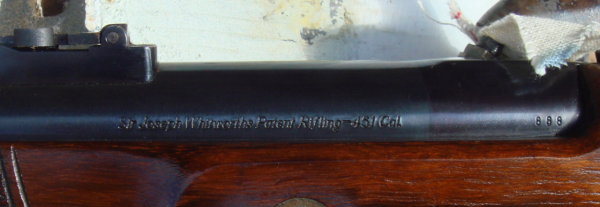RAEDWALD
40 Cal.
Happy thought.........Ask nice.
He might swap!

Happy thought.........Ask nice.
He might swap!
now that sounds like a personal question? we all know that MOTHER NATURE takes care of SHRUNKAGE !!!Thanks, but all I did was copy an image out of my file and place it here in the reply. Beforetimes, I needed a degree in computer science to even begin to think about it, so I never bothered.
Here's another one.... Dyson-built Baker rifle. Underneath is a chamois leather-wrapped .62cal ball...an original, and shrunk over time, like most of us, I
guess.
View attachment 46606
View attachment 46607
Again, thank you for the replies. My reason for asking if the “PN” was referencing the lock was because there’s the serif “P” and “N” or “H” on the lock bridle. What would those letters indicate if hidden in the wood? Are they inspected and approved stamps or something else? This weekend I’m going to completely take the lock apart, clean it up and look for other things I may have missed.
CLEANING:
Will I need a special brush and cleaning jag for the rifling and octagon shape of thIs bore?
Cheers,
James




With regards to tang sights, when I had a Parker-Hale Volunteer I simply screwed the base to the stock. Some have made custom mounts (and Pedersoli sell one I think) that are held in place by the tang screw.Are there any links or suggestions for attaching a tang sight to a rifle like this?
I don't think I have ever seen one of those Metford sights drawn in Bury's book. Although by 1864 his 2000 yard rifle had seen used the Gibbs-Metfod match rifle didn't apppear until the following year. I have only ever seen elevation only rearsights on them. Alex. Henry also made rearsights with windage adjustment. And yes, the short lived Goodwin sight was designed as an orthoptic sight and used in conjunction with the barrel mounted sight and foresight - my orignal has no graduations on whatsoever.William E. Metford,s single post Not Tang sight had a small amount of Windage adjustment......
Last post for the night...
After researching, I got some images of a Confederate used Kerr rifle. Down the road (if not before) I want to add a long range tang sight. That Kerr had a sight similar to the ladder style on the barrel. It didn't have a peep hole, only a sliding dovetail on the rails. Is there a repro of this style? Maybe my friends across the pond know what I'm referencing? Its not a Goodwin, Creedmore or anything else like I've seen.
In the meantime, the stock is HUGE and bulky. There's a TON of wood on it. I plan on reshaping it around the checkering (which looks nice from quick glance) because the barrel bands cut into the wood when they're taken off/put on.
After all the shaping and contouring is done, I'll lightly age the stock, possibly add an English silvered patch box since I'll most likely be removing the Parker Hale stamp when re-contouring, stain the American walnut a slight red more like English walnut, then coat the whole thing with multiple layers of linseed oil. I may remove all the blueing and age the bare metal with browning/blueing and/or light bleach. A good tang sight will be the last addition.
Thank you for all the comments. Keep em coming and I'll do my best to document my progress on "Alexander Henry: 2-Band Enfield Redux" once I start. After that...a rifle box and its accoutrements.
Cheers,
James







Enter your email address to join: